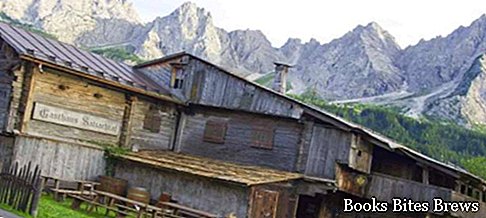What to see in Sappada, itinerary including the main attractions, including the typical wooden houses of the Cima Sappada village, the Piave springs, the Church of Santa Margherita in the Granvilla village, the Calvary path with the stations of the via crucis, the museum ethnographic, in addition to that of the great war and peasant civilization, and the wooden masks of the carnival, among which the rollate stands out, a symbol of the place.
Tourist information
Sappada is a town in the Dolomites, located at 1217 m above sea level in the territorial area between Veneto, Friuli Venezia Giulia and Austria, surrounded by the Siera mountain group, the Pesarine Dolomites, the Terze group and Mount Peralba.
The country develops in length from east to west with various villages, near the sources of the Piave, which are located in the Val Sesis at the foot of Mount Peralba.
Sappada probably originated shortly after the year 1000, when some families from Austria arrived there, who occupied the area with the permission of the rulers of the Patriarchate of Aquileia, in exchange for a small annual fee and loyalty.
In the sixteenth century, the timber trade with the Republic of Venice flanked the activities of agriculture and pastoralism, to which the locals were dedicated, generating a relative economic development.
It should be remembered that in the years 1915-18, the people of Sappada lived the events of the Great War very closely, and were involved in various ways for keeping the front line on Mount Peralba, where the remains of the ancient posts are still found today military.
Today Sappada is a popular tourist destination, equipped for both the winter and summer periods, classified as an Orange Flag by the Italian Touring Club.
Most of the villages of Sappada retain the traditional wooden houses built with the ancient block technique, adorned with the typical flowered balconies.
What see
The oldest and most picturesque houses are located in the Cima Sappada village, the highest and most distant from the center, which can be reached by following the upper road of the village, which runs parallel to the lower one, before rejoining it near the Museum of Rural Life .
From Cima Sappada also begins the road, open from May to October, which leads to the Sorgenti del Piave, easily reachable also by car.
In the central village of Granvilla there is the Parish church of Santa Margherita, dating back to the end of the XVIII century, in Baroque style.
Recommended readings- Veneto: Sunday day trips
- Schio (Veneto): what to see
- Vigo di Cadore (Veneto): what to see
- Vittorio Veneto: what to see
- Agordo (Veneto): what to see
Noteworthy is the spiritual path called the Calvary, which from Borgata Mühlbach runs through the streets of Sappada through 13 chapels and a church, which represent the stations of the Via Crucis.
Very interesting are the ethnographic museum Giuseppe Fontana, the house museum of rural life and the small museum of the great war.
During the Carnival celebrations you can meet the Rollàte, the typical Sappada mask, depicted as a mustachioed man, dressed in dark fur and wide striped trousers, bells tied behind his back, and a broom of hand in his hand.
The wooden masks used for Carnival are considered the symbol of Sappada.




